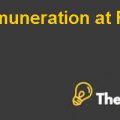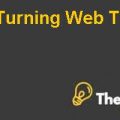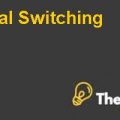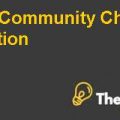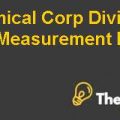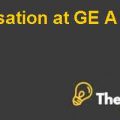Wildcat Capital Investors - Real Estate Private Equity Case Study solution
The modeling pro-forma has been completed in the excel spreadsheet based on the base assumption that have been provided in the case study. The expected return to Wildcat and its limited partners has been calculated to be 71% and 21% respectively. The expected return on the property if the property is held for 3 years before it is sold has been calculated to be 25%. All assumptions, amortization computations, pro-forma and waterfall calculations are shown in the excel spreadsheet.
Question 2
We have prepared the assumptions, amortization schedules, pro-forma and waterfall calculations separately for the four scenarios from A to D. The discussion of whether the deal will proceed or not under each scenario is as follows:
- Scenario A: Under this scenario, the tenant leasing schedule for the North Shore Bank has been changed where property remained vacant for year 4 and is occupied in year 5. The provided rent and expense rates have been used. The capital expenditures and commissions have also been incorporated. The expected return to Wildcat and its limited partners has been calculated to be 24% and 13% respectively. The expected return on the property if the property is held for 3 years before it is sold has been calculated to be 15%. Based on these results the deal should not proceed further.
- Scenario B:Under this scenario, we have incorporated the two capital expenditures required in year 2 and 3 and assumed a holding period of 5 years for the property. The expected return to Wildcat and its limited partners has been calculated to be 21% and 13% respectively. The expected return on the property if the property is held for 3 years before it is sold has been calculated to be 15%. Based on these results the deal should not proceed further.
- Scenario C:Under this scenario, the LTV ratio has been reduced to 60% and the interest rate has been increased to 7%. The expected return to Wildcat and its limited partners has been calculated to be 64% and 19% respectively. The expected return on the property if the property is held for 3 years before it is sold has been calculated to be 23%. Based on these results the deal should proceed further and Wildcat would proceed further.
- Scenario D:Finally, under this scenario a few investor friendly changes had been made to the waterfall structure as stated in the question. The expected return to Wildcat and its limited partners has been calculated to be 40% and 23% respectively. The expected return on the property if the property is held for 3 years before it is sold has been calculated to be 25%. Based on these results the deal should not proceed further.
Question 3
Zaski has made use of the benchmark assumptions and he has found the assumptions and finalized them based on the research conducted in the North area of Skokie. Our opinion on the 10 most important assumptions made by Zaski are as follows:
Wildcat Capital Investors – Real Estate Private Equity Harvard Case Solution & Analysis
- Exit cap rate:The exit cap rate is calculated by taking the going in cap rate and adding 100 basis points. However, Zaski selected an exit cap rate of 8.4% which is quite low and it was based on the expectations of Zaski about sale at $ 140 per square foot in three years’ time if the credit markets stabilized however, this is not certain. Therefore, a higher exit cap rate should have been used.
- Renewal probability: All the tenants were highly pleased with Wildcat and therefore, there was high probability that they would renew their leases. However, given the mix and different nature of all the tenants, conservative scenario should have been assumed by Zaski.
- Rental Rates and growth: The rentals are assumed to grow at a constant percentage of 2% however, a standard percentage should not be used and this rate should be based on the supply in the market that seems to be high currently.
- Operating expenses: Zaski assumed the operating expenses to be fixed and assumed that they would grow at 2.5% however, the past might not repeat given the current scenario of the real estate market. The percentage of 61% is quite high however, we do not have enough information or a breakdown of operating expenses to understand this.
- Capital expenditures: Zaski assumed that since we would be holding the property for 3 to 5 years therefore, no capital expenditures would be needed however, it is not possible and Zaski should have put aside funds for capital expenditures such as adding a new roof.
- Commissions: The commission rate is not stated in the case however, 2% commissions that are fixed have been provided in pro forma already. This seems to be a valid assumption.........................
This is just a sample partial work. Please place the order on the website to get your own originally done case solution.

